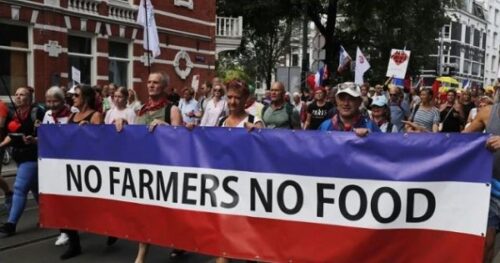3 January 2023
As an intensive farming nation, the Netherlands exports farm products, dairy and beef worth 105 billion euros a year. Much of this export volume comes from the more than fifteen million pigs and cows in the country which almost equal the human population.

Such success in livestock farming, however, has its drawbacks in terms of the climate impact of nitrogen emissions produced by the number of animals in the country.
The Netherlands has breached the limits on nitrogen emissions set by the European Union and is having to take measures to reduce such emissions to comply with ruling environmental regulations.
Instead of instituting a policy of tackling the greenhouse gas emissions problem by using technology and innovation as is being done in the US and at the same time produce more food, the Dutch government has taken the legal route of forcibly reducing the number of farms in the country aimed at cutting livestock numbers.
In June, farmer protests erupted when the government revealed that to tackle the nitrogen emissions, it was estimated that 11,200 farms would have to close and another 17,600 farmers would have to significantly reduce their livestock.
Five months later, in November, the government announced plans to expropriate between two to three thousand farms either by voluntary sales or if necessary by compulsory purchase orders.
This sparked more protests by farmers blocking motorways and through routes in cities with arrests being made by the police to maintain public order.
Alternative measures have been suggested by farmers’ representatives such as investing in dung-clearing robots and urine scrubbers, as well as adjustments to animal feed to combat emissions. Funds earmarked for expropriations of 24.3 billion euros could be redirected to this end.
Nonetheless, the government appears to be pursuing the legal route of forcibly reducing farm and livestock numbers with a view to completing the proposed initial closure of three thousand farms during 2023.

使用條款 | 隱私政策 | APLF 可持續發展